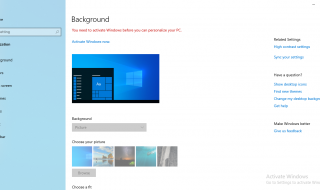In this article, we will dive deeper into the benefits of the MVP approach for software development. In brief, MVP is a vital step towards developing a startup app or website. Building a startup is quite demanding and with high risks of failure, especially considering the unstable economic situation caused by the pandemic. An MVP is a wise approach to minimize the risks.
Contents
What is MVP, and why is it necessary?
MVP is a product management approach that works best when a completely new product is introduced into the market. The key objective is to present the core functions that meet the specific user needs and solve a particular problem. This approach provides numerous benefits for both software developers and product users. Keep reading to learn more about the role of the minimum viable product (MVP) in software development.

6 benefits of a minimum viable product
These are the main ways MVP helps you achieve the best possible results.
Optimizing Costs
This is one of the most significant MVP benefits and the reason most companies adopt this approach. You need to realize that top-level industry giants were not built in one day or even in one year. The development took many years with constant product updates and improvements. The MVP keeps your project from becoming overly sophisticated and time-consuming. Your business receives more flexibility, and making changes is not so painful and expensive as with ready-made software. You can make wiser investments in the essential things.
Idea Validation
MVP is all about defining whether your idea is suitable to the market and user needs and requirements. It helps understand the market demand and the effective ways to reach more customers and gain their trust. An MVP helps determine whether the product satisfies a specific user need, measures the market demand, creates a detailed portrait of the target audience, and discovers whether potential users will use this software if they need to pay for it. After testing an MVP, you can make changes to the original concept of your product and come up with a more optimal marketing and sales strategy.

Faster Release
The decision to concentrate on the key functions significantly speeds up the product release. Testing the hypothesis is also really fast, and you receive effective user feedback on both essential and additional features. It will help you save valuable time on developing and testing useless features. Make the first release as small as possible and all subsequent releases step-by-step. This will help you avoid many pitfalls and deliver a flexible and scalable result to the market.
Identifying the Key Functionality
One of the significant MVP advantages is clarifying and focusing on the critical features of your product. It filters out the redundant parts that only burden the software performance and leaves the most impactful and frequently used elements. As a result, the product is easy to use, and the user interface is simplified. MVP also allows users to test each feature separately and discover its advantages and disadvantages for the actual user experience.
Establishing a Relationship with Users
One of the fundamental principles of this approach is testing a product with the target audience. Releasing different product iterations, you will define the functionality that offers your customers a helpful solution. Besides, you can engage new users and stakeholders starting from the very beginning of the development project. You receive valuable feedback and reviews that make your software more user-oriented.
Defining the Optimal Monetization Strategy
An application or website should gain profit. However, deciding on the right monetization strategy is not an easy task for product owners. This process is complex and has numerous criteria to consider. And MVP development is one of the decisive factors. For instance, if you are going to offer in-app purchases, the MVP will define whether your users are ready to pay for the extended range of services. It also helps predict the user behavior and define the drawbacks that may become an obstacle for your potential buyers’ successful journey.

The Drawbacks of MVP
When it comes to the pros and cons of MVP, it is necessary to mention that everything is not as rosy as it seems at first glance. To present you a complete picture, we include the most significant disadvantages of this approach:
- Selecting the optimal technical stack and software architecture requires much attention.
- You need to have a clear definition of your goals at the very beginning.
- Iterations need attention and development effort.
In Conclusion
An MVP brings numerous advantages and lets you receive better development results with minimum time and effort. However, this additional effort will pay off in the long run once the product is launched in the market.



